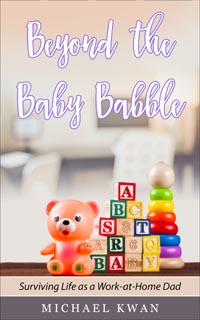CPP, OAS, GIS, defined benefits, defined contributions… If you have them, take them while you can. The tools listed above are typically what people depend on for living out their retirement years. We’ve put money into them since the first day we worked and haven’t looked back.
Unfortunately we haven’t looked at anything at all. I mean, do any of us really know what happens to your money, or even the mathematics behind pensions? Good! That’s exactly what your boss and your politicians want. Let’s take a happy trip down reality lane and shed some light onto this whole pension situation.
Let’s Not Lift The Veil Quite Yet
Before we rip the lid off of this, let’s stay for a moment as outside observers looking into pensions and let’s stick to the government pension. We put money in, it’s supposed to do something, and before we know it we’re 65 and through years of work, we should be receiving a cheque that will allow us to live the golden years. Let’s break this down a bit into three parts. First is the “put money in” part. Then, we have the “it’s supposed to do something” part and finally is the climactic finish of “we’re 65.”
Put Money In
Have you ever looked at how much gets deducted for CPP? It varies from person to person, but if you look at it, it’s only a few dollars per cheque. Let’s say, for example, it was $10. If that was per paycheque, every year you would only have $260. Let’s say you worked from the age of 20 to the age of 65. You would only have $11,700 saved in that time frame. Let’s say you retired at 65 and lived until you were 90. That’s only $468 a year. Not too golden if you ask me… and that’s not even indexed for inflation.
It’s Supposed To Do Something
So if we’re reasonable, we know that the money we put into the CPP has to be invested. I’d be curious to know what type of interest you’d have to get on that in order to make it worthwhile.
Sticking with the $10 example, we’ll say that the population of Canada is 100 and that every year it grows by 100 people more. So by the time our first Canadians are 65, we now have a population of 6500. If everyone started working at the age of 20 (as if that ever happens) and put in $10 per month, we’d be contributing $540,000 every year to the pension pool. With 100 people retiring, that money not only has to last until they die, but it also has to sustain the people that are going to be retiring in the years to come.
In our hypothetical example, let’s say that everyone’s entitled to at least $100 per month and that everyone dies at the age of 90. That pension fund needs to be spitting out $3,000,000 every year. No sweat. That fund only needs to invested and, with a kick ass fund manager, produce an annual growth of a mere 555%. Do we have a problem here?
We’re 65 and Ready to Retire
The main problem here isn’t the unsustainability of pensions. It’s the familiarity people have with them and the comfort and confidence they have with having that veil pulled over their eyes. For as long as I’ve been in finance, this subject has always been met with criticism. Advisors and casual investors alike all simply assume that by the time we retire, that fund will be there and they plug the corresponding figures into their financial plans. One only needs to have a look at the pension funds, government or corporate, around the world to see the reality of this. As Morpheus said in The Matrix, “Many of them are so inured, so hopelessly dependent on the system, that they will fight to protect it.”
The more we depend on pensions, and less on ourselves, the bigger of a surprise we’re going to wake up to one day.






I forgot to mention that this is one of the major contributing factors to why there’s need of a continually perpetuating economy.
https://btr.michaelkwan.com/2013/01/07/understanding-fractional-banking-and-the-financial-crisis-part-2/